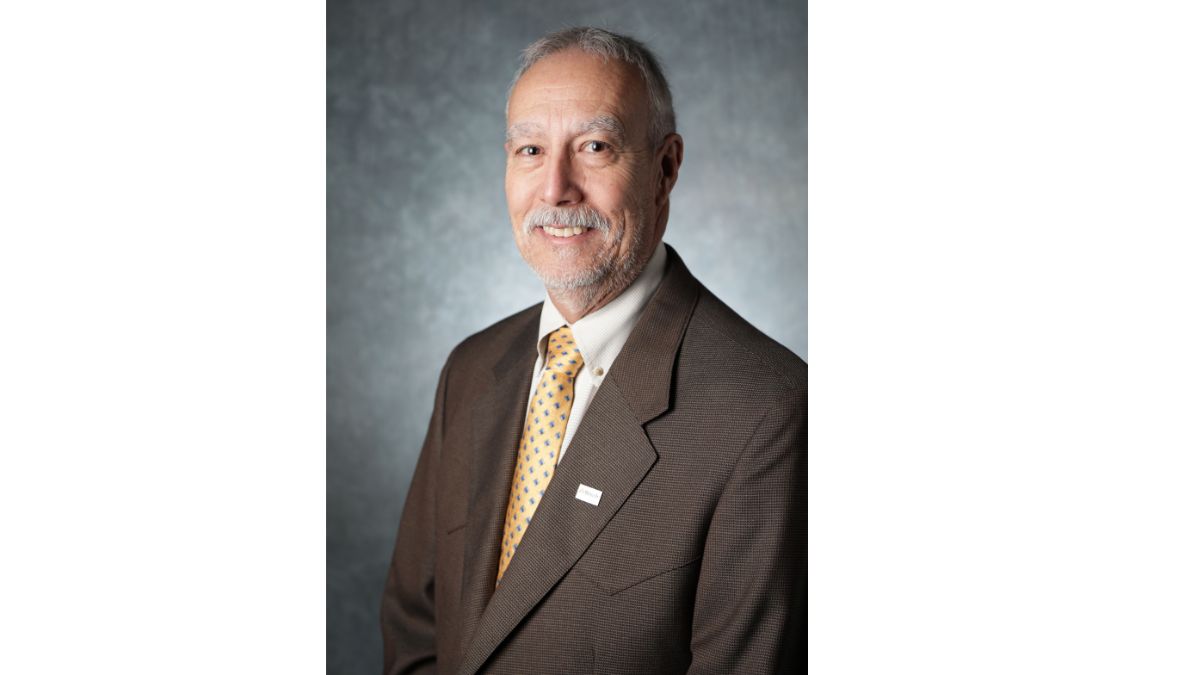Optimizing Poultry Health: Understanding Nutritional Solutions for Digestive Tract Issues
What role does nutrition play in poultry production? Dr. Fernando Rutz, technical manager for Alltech Latin America, joins the Ag Future podcast to discuss the importance of a well-designed nutritional program for improving immunity and maximizing performance in poultry.
The following is an edited transcript of the Ag Future podcast episode with Dr. Fernando Rutz hosted by Tom Martin. Click below to hear the full audio or listen to the episode on Apple Podcasts, Spotify or Google Podcasts.
Tom: Welcome to Ag Future, presented by Alltech. Join us from the 2022 Alltech ONE Conference as we explore opportunities within agri-food, business and beyond.
I'm Tom Martin with the Alltech Ag Future podcast series. Dr. Fernando Rutz is a technical manager for Alltech in Latin America. He teaches physiology and monogastric nutrition at the Pelotas Federal University in Brazil. He's the author of several book chapters and newspaper articles and (is) a speaker at seminars and symposiums, both in Brazil and abroad. Dr. Rutz's research interests include organic minerals, enzymes and polyunsaturated fatty acids, and poultry nutrition and reproduction. He joins us to talk about nutritional solutions to digestive tract issues in poultry. Welcome, Dr. Rutz.
Fernando: Thank you.
Tom: Let's begin with this: How can a nutritional program improve immunity in poultry?
Fernando: What happens in the field is that you have lots of challenges. You have a DNA that wants to be expressed, but you have a lot of challenges. What we have to find here is a balance in between the challenge and what we can do to help the bird. What are the challenges? The challenges are virus, bacteria, all the parasites you can find in the field. What can we do to help the bird? Then we have to find the (right) strategy there. This strategy would be (implemented) through nutrition, through cleanness and, I mean to say, the biosecurity that you can find for the bird. Also, how can you help the health of the bird using some management practices? About these management practices, I mean, good vaccination allows the little chick to have an opportunity to absorb all the yolk in which all the antibodies come from the mother to the little chick. That means — this is how we can help. We need a strategy over there to make it better for the bird.
Tom: Let's say we have a strategy in place. How do nutrients interact with that immune system in the bird?
Fernando: (In) two ways, I would say. (With) some nutrients, you can have a pro-inflammatory effect, and (with) some other nutrients, you have an anti-inflammatory effect. We have to go in between them. This is what you call immune modulation. Some other nutrients would just neutralize the free radicals that you have in the field.
Tom: How important is it to find just the right nutritional balance to boost immunity on one hand while also providing the nutrition it takes to maximize performance?
Fernando: Well, chicken really have different requirements. The lowest one would be, really, for performance, and the highest one is for immunity. First of all, we have to fulfill the requirement needs, and then, in the second place — and then give some extra nutrients, probably some more specific nutrients, (or) some specific feed additives, also, that can help the immune system to become better.
Tom: Does Alltech produce products intended to play a role in fortifying the immune system?
Fernando: Most of the products (produced by) Alltech will do it. Let me give you some examples. For example, we have organic minerals over here. About these organic minerals, one of them is called Sel-Plex organic selenium. With the Sel-Plex, it neutralizes free radicals. It's one of the ways it works. Another way it works is that it has a chemotaxis effect. That means to say it will bring all these neutrophils with the macrophage — which are cells that will fight off the disease — to the place in which a challenge is happening.
Another one would be zinc. Zinc is very important for the synthesis of proteins because it participates in a protein called the zinc fingers, mainly that. With the zinc, you form a barrier, help form a barrier against the microbes that want to penetrate. Not only that, we have also Viligen. (With) Viligen from Alltech, it does not allow the E. coli and the Salmonella bacteria to attach to the glycosphingolipids in the intestine, so they cannot colonize the intestine. Besides that, the Viligen, (as well as another Alltech solution called) Actigen, also acts on improving the acquired immune system and decreasing the inflammation.
The other product Alltech has that works very well in this one is called the Viligen. Viligen acts against the gram-negative and gram-positive bacteria. With this Viligen mode of action, it acts (by) increasing the epithelial cells, which (are) a barrier in the intestine but also improve the mucus production. Improving the mucus production of a dairy (animal) will help the immunoglobulin A, which protects all the mucosa, (the) mucosal system. One more important point (about) this Viligen is that it increases the antimicrobial proteins (that are) produced by animal, by itself. These antimicrobial proteins have a very good effect, a very nice effect, against the gram-positive bacteria.
I would tell you (about) one more (Alltech product). That is the Nupro. Nupro is a nucleotide-based product. It's a very rich nucleotide. It's extracted from the yeast and cells. The immune cells cannot synthesize all the nucleotides they need, so you provide them through the diet. That makes it very good for the chicken.
Tom: Have there been recent innovations that have captured your attention and interest?
Fernando: A lot. I would say a lot. Those that do call, more and more, my attention today is that — people are realizing that they need to interact, the whole areas need to interact. That means environment and nutrition, sanitation, everything that (is involved in animal production) needs to interact. Probably, where most people are putting the emphasis right now is in microbiology and how this microbiology can interact with the host. When I mean microbiology, I mean the one that is in the GI tract, the one that is in the skin, the one that is in the respiratory tract, because this microbiology can educate the immune system, so it's extremely important.
Tom: Tell us about your research, Dr. Rutz, in the area of organic minerals. What's come from those studies that would be of interest and useful to poultry producers?
Fernando: Well, we've been doing some interesting studies in that area. For example, (we) have shown that if you feed those organic minerals from the beginning to a rooster since (the time that) they are baby chicks, you improve the sperm cells' capability (and) motility when they are old. This is a big problem today in the industry. People start complaining that the roosters, when they get old, they cannot copulate well anymore, and they have not (got) good sperm cells.
Another important point that is that we've been working a lot with the total replacement of inorganic (with) bio-organic minerals — and with excellent results. (We’ve seen) 100% success when we talk about, for example, layers in terms of actual production. Besides that, we've been also working some with the skin-scratching stuff. If you add Bioplex zinc in combination with Sel-Plex (to the ration), you improve a lot the quality of the skin and, really, the carcass — (it will) really look like the silky carcass (as a result). That attracts a lot the attention of the client or the consumer when it goes to the supermarket.
Tom: You've also concentrated on the role of polyunsaturated fatty acids in poultry nutrition and reproduction. What have you learned?
Fernando: Well, (there have been some) very interesting studies we have conducted over there. For example, if you talk about layers, with layers, you have a better yolk color and, also, you can enrich the egg with DHA. What's extremely important is omega-3 (in the animal product) for human beings later on to eat. For breeders, for roosters, you improve the fertilizing capacity of the sperm cells. We've been talking about this DHA all the time for human beings. Before we forget all about that, the DHA is also important for the chick. You have a decent amount of DHA in the brain of the chick, too. Some studies with swine have shown that if you use DHA for swine, the little piglets, they become smarter. They can go, then, and look for the teats (or) the sows better.
Tom: Interesting. It's Dr. Fernando Rutz, the technical manager for Alltech in Latin America. Thank you so much for joining us.
Fernando: Okay.
Tom: For the Alltech Ag Future podcast series, I'm Tom Martin. Thank you for joining us. Be sure to subscribe to Ag Future wherever you listen to podcasts.
- Read more about Optimizing Poultry Health: Understanding Nutritional Solutions for Digestive Tract Issues
- Log in to post comments

In addition to his role as a technical manager for Alltech in Latin America, Dr. Fernando Rutz also teaches physiology and monogastric nutrition at the Pelotas Federal University in Brazil.





















